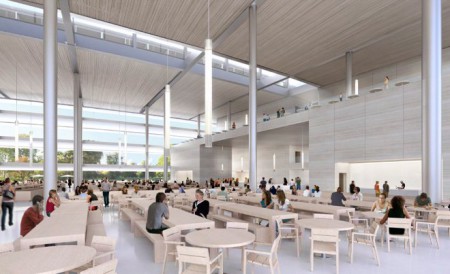While many intuitively think that enormous buildings must be naturally bad for us and the environment, architect Norman Foster argues very clearly that they are, paradoxically, better for us and the environment than we may think.
And he would know.
One of the world’s most esteemed and awarded architects, Foster has been designing some of the largest buildings around the world for several decades and knows quite a bit about such large structures–both the good and bad of them.
Apple’s Spaceship Not The First
Before Apple’s enormous headquarters, Foster + Partners started designing consolidated terminal designs at International airports around the world, making the buildings bigger and more centralized. One such design was his new terminal in Beijing. Opening up just before the 2008 Olympics, Foster’s 14 million square feet terminal is one of the largest structures in the world.
Apple’s new circular headquarters is 3 million square feet, by comparison.
The benefits of larger terminals is that such buildings are more compact buildings. The experience is also better for the end user, the traveler. You don’t have to go through the process of traveling between structures, in tunnels and getting on trams–all of which complicates an already stressful experience.

01 – Cafeteria restaurant in Apple’s new headquarters. (copyright Apple / Foster + Partners. All Rights Reserved)
Such mega buildings are also more economical. Their perimeters are in net, less than a combination of separate structures’ perimeters. And they are more efficient across the board in systems costs and in sustainability costs. In sum, they are better for the environment–and in the case of terminals–better for people.
Norman Foster has much more to say about Apple’s new headquarters and addresses the questions about bringing human scale to such large buildings. To read the complete article go here.
Editor’s note: This article was published earlier with Norman’s name misspelled. It has since been corrected.



Reader Comments
Comments for this story are closed